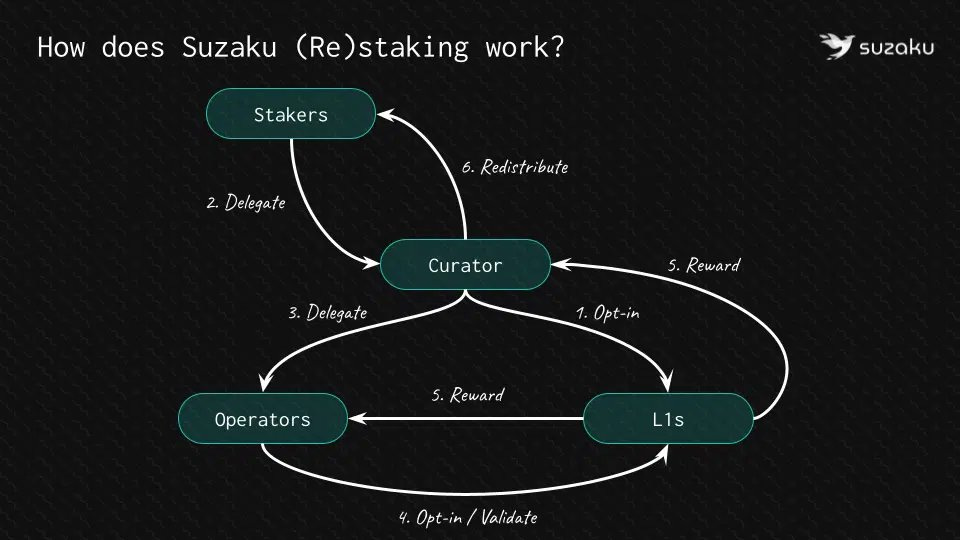Why I’m Launching My Layer 1 on Avalanche with Suzaku
How Avalanche’s Modular Framework and Suzaku’s Restaking Unlock a New Path for Launching L1 Chains
Launching a Layer 1 chain is not for the faint-hearted. It’s technical, political, and economic all at once. When I started mapping out the architecture for the L1 I’m building, I knew I needed more than just a fast consensus algorithm—I needed a security model that scales, an ecosystem that embraces experimentation, and an infrastructure that doesn’t force me to reinvent the wheel.
That’s how I landed on Avalanche—and why Suzaku immediately caught my attention.
Why Avalanche?
Avalanche’s modular architecture, comprising the X-Chain, C-Chain, and P-Chain, offers unparalleled flexibility. Its Snowman consensus mechanism ensures rapid finality and high throughput, making it an ideal platform for launching scalable and efficient L1s. Moreover, Avalanche’s support for custom L1s allows us to tailor our blockchain to specific requirements, ensuring optimal performance and security.
Introducing Suzaku: The Decentralization Hub for L1s
Suzaku is more than just a restaking protocol; it’s a comprehensive framework designed to assist Avalanche L1s in building from scratch to mainnet. By providing tools to bootstrap cryptoeconomic security, scale validator sets, and ensure decentralisation, Suzaku addresses many of the challenges faced by new L1s.
Key features of Suzaku include:
Unified Framework: Offers all the necessary tools for L1s to transition from development to mainnet deployment.
Cryptoeconomic Security: Allows L1s to tap into shared collateral and enable (liquid) staking of their native tokens.
Scalability and Decentralization: Connects L1s with high-tier operators to scale and decentralize their networks effectively.
Avalanche Gave Me the Foundation I Needed
Avalanche is one of the few L1 ecosystems that’s truly modular. Between the X-Chain for assets, the C-Chain for smart contracts, and the P-Chain for validators and subnets, it offers enough flexibility for builders to shape the chain around their vision, not the other way around.
What stood out for me wasn’t just Avalanche’s scalability or finality—it was the subnet model. It meant I could build an independent chain with my own token and validator logic and still plug into a wider, thriving ecosystem.
But I still had one big question: how do I bootstrap validator security from day one?
Suzaku Solved That Problem for Me
Suzaku is a restaking protocol designed for Avalanche-native chains. As someone launching a new L1, this matters a lot. Instead of asking my early users and community to lock up only my token to secure the network, Suzaku lets me tap into a broader pool of restaked assets—like sAVAX, USDC, BTC.b, and more.
This dual-staking model changes the game:
It lowers the barrier for validators to participate.
It lets users put idle capital to work.
And it gives my chain cryptoeconomic security that’s composable with Avalanche’s wider validator economy.
If you’ve ever tried to bootstrap a validator set, you know how hard it is to balance decentralisation with economic incentives. Suzaku makes this much more manageable, especially when paired with Avalanche’s P-Chain logic.
Interoperability Is a Must—Here’s Where Suzaku Comes In
Building an L1 in 2025 means considering interoperability. Avalanche has its Interchain Messaging (ICM) layer, which is great, but Suzaku takes it further with the Suzaku Relayer Network (SuzakuRN).
For my chain, Suzaku means more secure and censorship-resistant communication between chains. If you plan to bridge value, data, or logic across subnets or even beyond Avalanche, this relayer-level trust layer becomes essential.
Think of it as a decentralised courier network for your chain, built in from day one.
Why Restake with Suzaku? A Staker’s Perspective
As someone already staking AVAX or holding Avalanche-native assets like sAVAX, Suzaku offers a compelling opportunity to put your capital to work twice.
With Suzaku’s restaking protocol, you're not just passively earning yield from Avalanche—you can now secure emerging L1s launching on Avalanche and earn additional rewards for the same assets. This means:
Amplified Yield: Restakers earn rewards from both Avalanche and the new L1s they secure.
Diversified Exposure: Gain upside from early-stage networks without unstaking core assets.
Liquid Restaking Options: Suzaku’s upcoming Liquid Restaking Tokens (LRTs) will allow you to stay liquid while securing multiple networks.
In short, if you're long Avalanche and its ecosystem, restaking through Suzaku aligns your incentives with the future growth of new chains and pays you to do it.
L1s Are Coming Back—and We Need Better Tools
We’re entering an era where L1s aren’t just trying to be “the next Ethereum”—they’re being built to serve specific ecosystems, industries, and use cases. But launching one still means solving a thousand problems at once.
Avalanche and Suzaku take several of those off my plate. I get:
Flexible architecture
High-throughput consensus
A modular security layer via restaking
Trust-minimised interop with SuzakuRN
Building a Resilient L1 with Suzaku and Avalanche
By integrating Suzaku into our development strategy, we’re not just launching an L1; we’re establishing a robust, secure, and decentralised network from day one. The synergy between Avalanche’s scalable infrastructure and Suzaku’s comprehensive tools positions us to navigate the challenges of blockchain deployment effectively.
For fellow builders considering launching an L1, exploring the combined capabilities of Avalanche and Suzaku could be the key to a successful and sustainable blockchain network.
For more information on Suzaku and its offerings, visit Suzaku’s Official Website and explore their Documentation.
Dive into the Avalanche ecosystem today! Download the Core Wallet and unlock a world of seamless DeFi, NFTs, and more.






